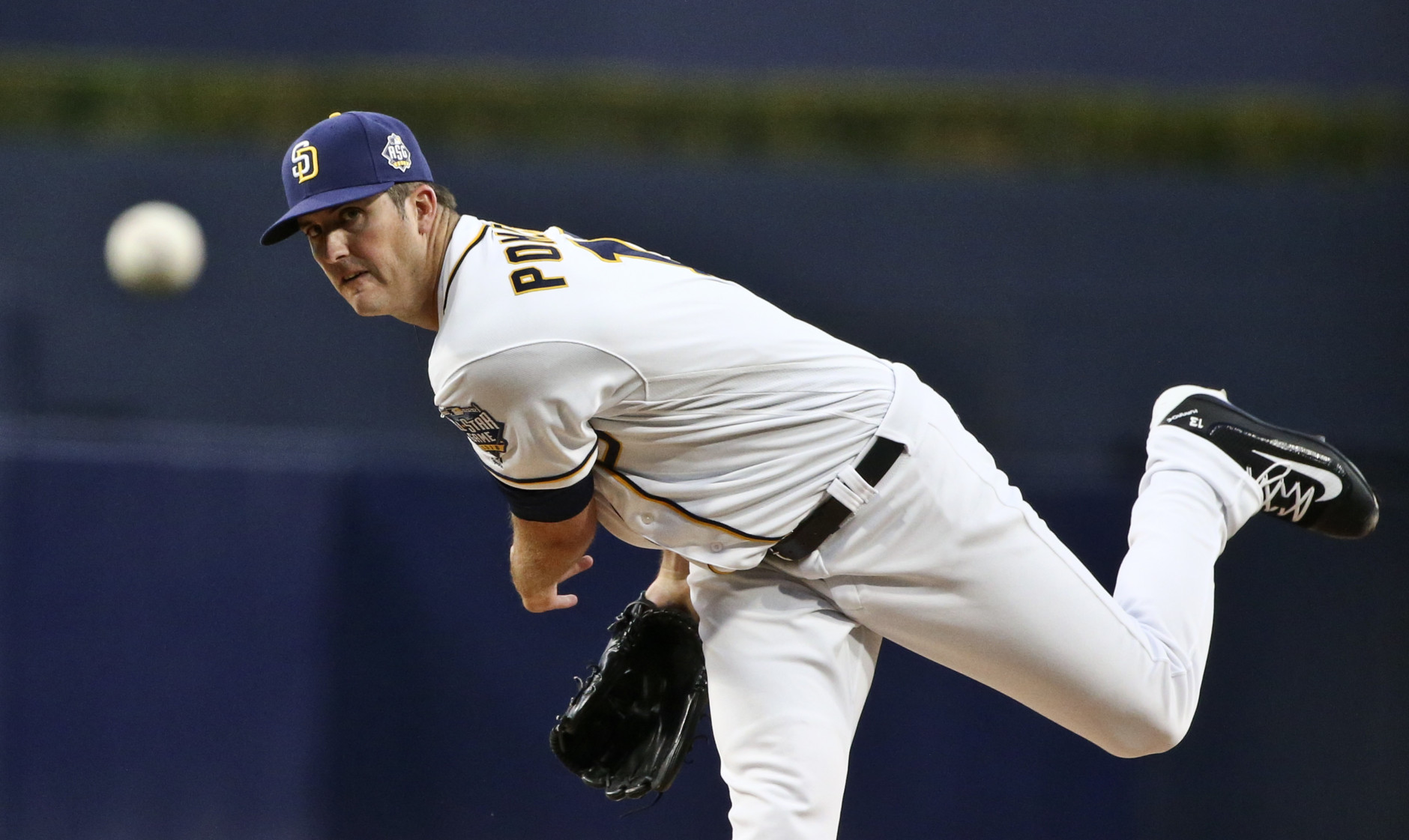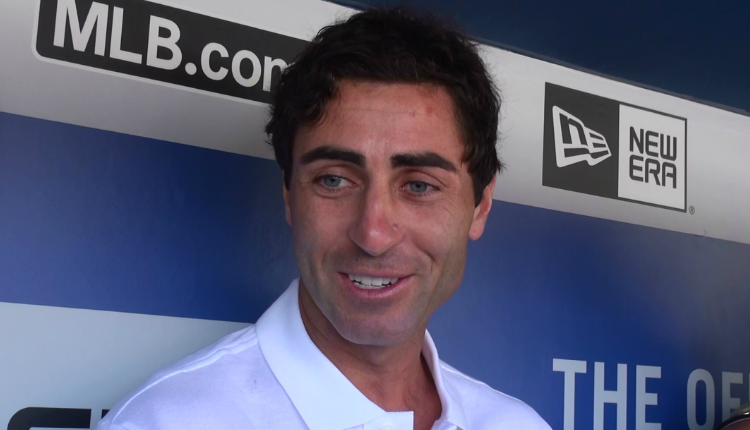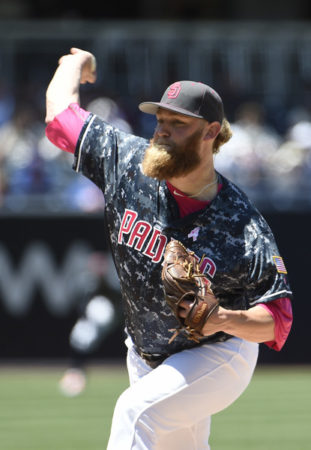Defending A.J. Preller’s Shady Trades

San Diego Padres starting pitcher Drew Pomeranz works against the Pittsburgh Pirates during the first inning of a baseball game Wednesday, April 20, 2016, in San Diego. (AP Photo/Lenny Ignelzi)

In business, it is never a good idea to deceive other businessmen as one’s credibility may be damaged without repair.
This is especially true for the business of baseball, where a dishonest transaction has the possibility of not only ruining a general manager’s reputation, but also the talent of a team. Other teams simply won’t trust the unethical behavior, and thus will not be willing to part with good, but expendable players.
Such a scenario happened to the Padres as G.M. A.J. Preller attempted to steal praiseworthy prospects from other systems. In receiving prized pitcher Anderson Espinoza for Drew Pomeranz, and adding Carter Capps, Jarred Cosart, power prospect Josh Naylor, and valuable pitching prospect Luis Castillo for Andrew Cashner and Colin Rea to the Friars’ system, Preller experienced criticism and a 30-day suspension in September 2016.
However, were the trades completely Preller’s fault? I beg to differ.
Drew Pomeranz/Anderson Espinoza Trade
On July 14, 2016, the Friars traded Drew Pomeranz, who had recorded a 2.47 ERA and 115 strikeouts over 102 innings in blue and white, for Anderson Espinoza, a prospect who has been compared to the greatness of Pedro Martinez and Felix Hernandez. Although Pomeranz completed the 2016 season as a starter, he endured tightness in his throwing triceps. As a result, his ERA suffered from 2.47 to 4.59 after the trade and was unable to make a start in the postseason for the Red Sox. Preller went through a suspension as a direct effect of this trade as his staff did not reveal necessary medical information on the lefty.
However, the G.M. was not entirely at fault for the ill decision Boston made in taking Pomeranz for their most prized prospect. Even though the men at Fenway needed quality starters so they could succeed in the second half of 2016, as well as October, that is no reason for a club to disregard a player’s history. After all, Pomeranz had never pitched more than 90 innings before 2016, 10 less than the amount he tossed as a Padre. Also, he served as a relief pitcher for most of his career which started in 2011. Being as young and new to being a starting pitcher as Pomeranz was, the Red Sox should have seen some red flags before they traded for the Padres’ ace. Any rational thinker would notice the strong possibility that such a pitcher would be ineffective in the long-haul, but Boston favored hope instead of practicality. Thus, some blame ought to be casted upon the Fenway businessmen too.

Pomeranz could still be worth the departure of Espinoza though. Although Drew will never be compared to a Martinez or King Felix, he is useful as at least a fourth starter. The 4.59 ERA he tossed while in red proves that. Yet, Pomeranz could be something more. 2016 was not the first year success has come to the southpaw. In fact, since 2014 Pomeranz was a reliable and decent starter/reliever. In 2014, he made 10 starts as well as 10 relief appearances, accumulating a 2.35 ERA in the process. In 2015, he made nine starts and 53 relief appearances, earning a 3.66 ERA. Finally, last year he broke out as a Padre, striking out more batters than the total number of innings he appeared in. The fact that Pomeranz relies on his superb curveball, as well as having excellent control and command, allows him to get batters out without having to adjust when injury slows down his fastball. One final thing to mention is that the Red Sox had the opportunity to undo the trade, but opted against it.
Andrew Cashner Trade
Although the Padres’ midseason deadline deal with the Marlins is considered to be named the Cashner deal, he is not the reason why the exchange came under attack. Instead, fellow Padre Colin Rea and his balky throwing arm is. The Padres once again hid medical information from another team whom they dealt with. As a result, the trade had to be undone somewhat. After getting injured in his first Miami start, the promising Rea was returned to San Diego for a good Marlins’ pitching prospect named Luis Castillo. Without this move, Preller would have seen his reputation crumble beneath him as Castillo was one of the best prospects Miami had as he has the possibility of emerging as at least a mid-rotation starter.
Yet Preller should not be criticized too much for this as the Marlins were shifty when they received Fernando Rodney from Petco Park. Coming off a 28 game run of 0.31 ERA ball, Rodney was appealing enough for Miami to take a gamble on him on June 30. In return the Friars received an 8th-round, yet overachieving minor league starter named Chris Paddack. During his pro debut, Paddack dominated the Gulf Rookie League on the success of his command and excellent fastball/changeup combination. He ended his rookie season with a 2.18 ERA and rode that to a neat 0.85 on the Marlins’ A-ball team in 2016. After such an eye-opening performance, Paddack came over to the Fort Wayne Tincaps with lofty expectations. He largely met those expectations by posting a lower earned run over three games started. Having a K/9 rate of 14.8 and a WHIP rate of 1.00 allowed the righty to ascend the prospect ranks and put himself firmly in the Padres’ plans for the future. But, those three games were the only ones he threw as a Tincap before getting injured and needing Tommy John surgery. This short tenure in Fort Wayne is suspect in its own right, and the delayed arrival of such a promising pitcher hurts San Diego just as much as the Cashner trade could have for the Marlins. Therefore, Prellers’ later denounced transaction with the Marlins may have simply been karma.
Moreover, the players the Padres did take from Miami were more like throw-away pieces at the time than impact players. Jarred Cosart was a failed starter still trying to cement a role for himself after four years in the majors, Carter Capps was undergoing rehab from Tommy John surgery, and Josh Naylor was a troublesome teen who’s only real asset is his power potential which still hasn’t been unlocked as much as scouts would like. Naylor was supposedly the prize of the return, but doesn’t even have a clear path to the majors with Myers firmly entrenched as the Padres’ first baseman of the future. In retrospect, Capps has the chance to become the stud of the trade, as he is a lights-out closer who has the potential to deliver an earned run average under two for several seasons. Yet, the players Preller received for Cashner weren’t steady nor proven enough to begin any groaning over the botched arrangement.
In conclusion the trades Preller orchestrated last year, namely the Pomeranz and Cashner ones, weren’t the fault of the Padres’ G.M. alone. Poor planning and shady prior trades by the other teams were equally to blame. As a result, Boston and Miami should not be bellyaching over what transpired; instead, they ought to learn from their mistakes, learn about the players they are ready to acquire, and make fair trades themselves.
I write, I write, and then I write some more.. Lifelong Padres & Chargers fan who is tired of the acceptance of losing that grips all of San Diego sports fans!